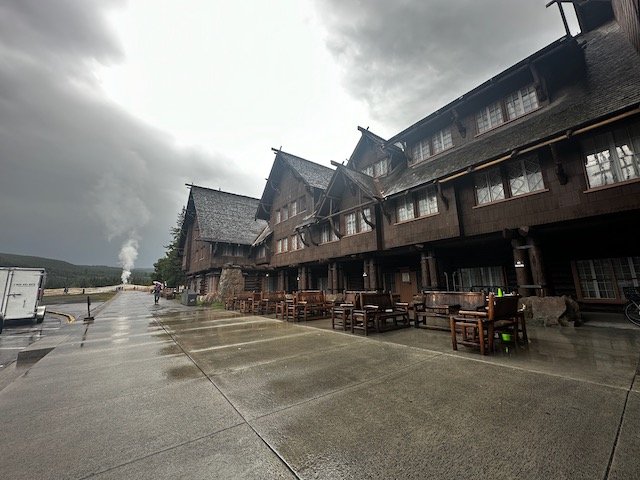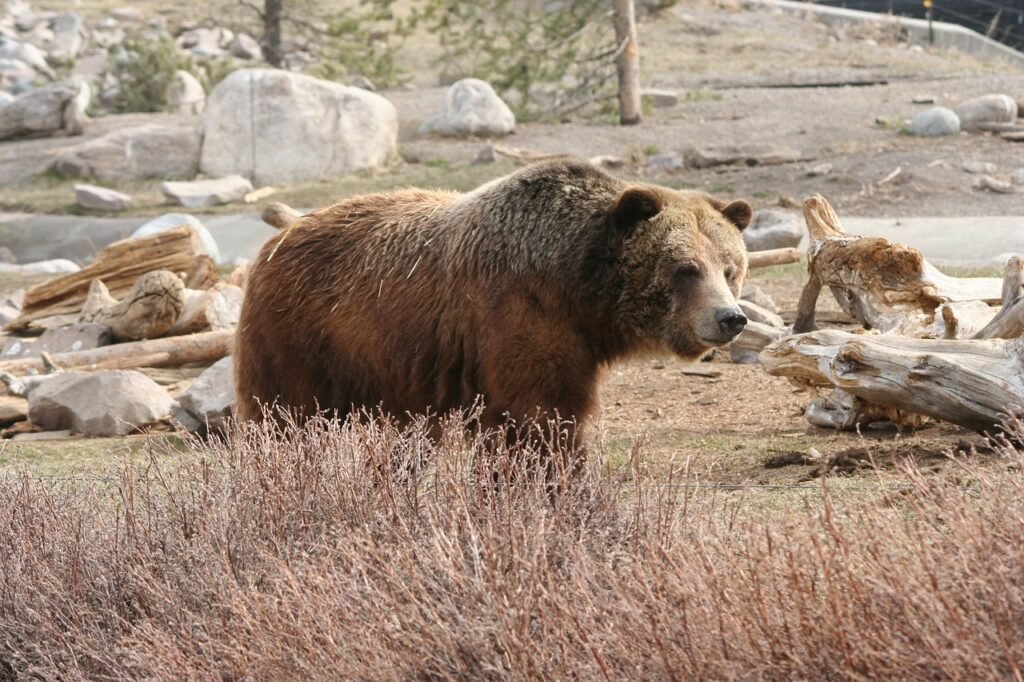Yellowstone is undoubtedly one of the most iconic national parks in the United States. With its stunning landscapes, geothermal features like Old Faithful, and abundant wildlife, it’s a trip you’ll always cherish.
I remember my first trip to Yellowstone vividly. My excitement was mixed with a bit of nervousness because I didn’t quite know what to expect. There were so many things to consider, from packing to planning activities, and even what to do if we encountered wildlife.
But once I was there, all the planning paid off, and I could fully enjoy the experience.
With that in mind, this guide is here to help you prepare for your first trip to Yellowstone, so you can relax and focus on making the most of your adventure.
1. When to Visit Yellowstone
Choosing the best time to visit Yellowstone depends on what kind of experience you’re looking for. Yellowstone is beautiful year-round, but each season brings different opportunities and challenges.
Summer (June to August)
Summer is the most popular time to visit Yellowstone because the weather is warm, and all the park’s facilities and roads are open. However, it’s also the busiest season, so expect crowds, especially around famous spots like Old Faithful and the Grand Prismatic Spring.
If you’re traveling with kids, summer can be a great time because the warmer weather allows for more outdoor activities like hiking, picnicking, and wildlife viewing.
Fall (September to October)
Fall is an excellent time to visit if you prefer cooler temperatures and fewer crowds. The autumn colors are stunning, and the wildlife is still very active.
Keep in mind that some of the park’s facilities and roads may start to close in October due to snow, so if you plan to visit in the fall, aim for September or early October.
Winter (November to March)
Yellowstone transforms into a winter wonderland during these months. If you’re looking for a unique and quieter experience, winter is the perfect time to go. You can explore the park on snowshoes, take snowcoach tours, or even go cross-country skiing.
Just be aware that many of the park’s roads and facilities close in winter, and only certain areas are accessible.
Spring (April to May)
Spring brings the park to life with blooming wildflowers and active wildlife emerging from hibernation. It’s a less crowded time to visit, but some roads and facilities might still be closed due to snow.
If you’re okay with some chilly weather and fewer amenities, spring can be a wonderful time to experience Yellowstone’s awakening.
2. Where to Stay

One of the first things you’ll need to decide is where to stay during your trip. Yellowstone offers a range of accommodations, from camping to lodges, so you can tailor your stay to your preferences and comfort level.
Camping
If you love the outdoors, camping in Yellowstone is an unforgettable experience. The park has several campgrounds, including some that are first-come, first-served and others that require reservations.
Popular campgrounds like Canyon, Madison, and Grant Village fill up quickly, so if you’re planning to camp, make reservations as early as possible.
Camping is ideal if you want to be fully immersed in nature, but keep in mind that weather can be unpredictable, even in the summer. Be prepared for chilly nights and the possibility of rain.
Lodges and Cabins
If camping isn’t your thing or if you prefer a little more comfort, staying in one of Yellowstone’s lodges or cabins is a great option. The park offers a variety of accommodations, from historic lodges like the Old Faithful Inn to more modern facilities like Canyon Lodge.
Staying inside the park allows you to be close to the action and eliminates the need to drive long distances each day. However, lodging inside the park can be expensive, and rooms fill up quickly, so it’s best to book several months in advance.
Outside the Park
If you can’t find accommodations inside the park or prefer staying outside, there are plenty of options in nearby towns like West Yellowstone, Gardiner, and Cody.
These towns offer a range of hotels, motels, and vacation rentals, and while you’ll need to drive into the park each day, they provide a comfortable and convenient base for your trip.
3. What to Pack
Packing for a trip to Yellowstone can be a bit tricky because the weather can vary greatly depending on the season and the time of day. Here’s a guide to help you pack smart for your adventure.
Layered Clothing: Yellowstone’s weather is unpredictable, and temperatures can change quickly, especially in the mornings and evenings. Even in the summer, it’s not uncommon to experience chilly mornings and warm afternoons.
Packing layers allows you to adjust your clothing as needed throughout the day. A good rule of thumb is to bring a mix of short-sleeve shirts, long-sleeve shirts, a warm fleece or jacket, and a waterproof outer layer.
Sturdy Footwear: Whether you plan to hike or just explore the park’s boardwalks and lookout points, comfortable and sturdy footwear is essential. Hiking boots or shoes with good grip and support are ideal, especially if you plan on tackling some of the park’s trails.
If you’re not planning to hike, a good pair of walking shoes or sneakers will suffice for general exploration.
Sun Protection: The sun at higher elevations can be intense, so don’t forget to pack sunscreen, sunglasses, and a wide-brimmed hat. Even on cloudy days, UV rays can be strong, so it’s better to be prepared.
Binoculars and Camera: One of the highlights of visiting Yellowstone is the chance to see wildlife up close, from bison and elk to bears and wolves. Bringing a pair of binoculars will allow you to view wildlife from a safe distance.
A camera is also a must for capturing the park’s incredible landscapes and geysers. If you have a camera with a good zoom lens, you’ll be able to take some amazing wildlife shots.
Water and Snacks: Yellowstone is vast, and services inside the park can be limited, so it’s important to bring water and snacks with you each day. Staying hydrated is especially important, as you’ll be at a higher elevation than you’re likely used to.
Pack a reusable water bottle and refill it throughout the day. Snacks like trail mix, granola bars, and fruit will keep your energy up while exploring.
4. Planning Your Activities
Yellowstone offers a wide range of activities, from hiking and wildlife watching to exploring geysers and hot springs. The park is huge, so it’s impossible to see everything in one trip.
For first-time visitors, it’s a good idea to plan your activities in advance to make the most of your time.
Geysers and Hot Springs
One of the most iconic features of Yellowstone is its geothermal activity. No trip to the park would be complete without visiting Old Faithful, the Grand Prismatic Spring, and the various geyser basins.
Old Faithful is one of the most predictable geysers in the park, erupting roughly every 90 minutes. Be sure to check eruption times when you arrive so you don’t miss it.
The Grand Prismatic Spring, with its vibrant colors, is another must-see. It’s the largest hot spring in the park and offers spectacular views.
Wildlife Watching
Yellowstone is home to an incredible array of wildlife, including bison, elk, bears, wolves, and more. The best times for wildlife viewing are early morning and late evening, when animals are most active.
Lamar Valley and Hayden Valley are two of the best places to spot wildlife, and it’s not uncommon to see herds of bison or even a bear from the safety of your car. Remember to keep a safe distance from all wildlife, as they are unpredictable and can be dangerous.
Hiking
Yellowstone offers hiking trails for all skill levels, from easy boardwalks around geyser basins to more challenging hikes up mountains and through forests.
If you’re new to hiking or traveling with kids, start with shorter, easier trails like the Fairy Falls Trail or the boardwalks around the Upper Geyser Basin.
For more experienced hikers, trails like Mount Washburn or the Blacktail Plateau offer breathtaking views and more of a challenge.
Ranger Programs
Yellowstone offers a variety of ranger-led programs that are both educational and fun for families. These programs cover topics like wildlife, geology, and the history of the park.
Check the park’s schedule when you arrive to see what programs are available during your visit.
5. Safety Tips for Yellowstone

While Yellowstone is a beautiful and awe-inspiring place, it’s also a wild and sometimes unpredictable environment. It’s important to follow safety guidelines to ensure that your trip is both fun and safe.
Stay on Designated Trails
The geothermal features in Yellowstone are fragile and potentially dangerous. Always stay on marked trails and boardwalks, especially around geysers and hot springs. The ground can be unstable in these areas, and venturing off-trail can result in serious injuries.
Wildlife Safety
While seeing wildlife is one of the highlights of visiting Yellowstone, it’s important to keep a safe distance. Park regulations require that visitors stay at least 100 yards away from bears and wolves and at least 25 yards away from all other wildlife, including bison and elk.
Never approach or attempt to feed wildlife, as this can be dangerous for both you and the animals.
Weather Preparedness
Yellowstone’s weather can change rapidly, and thunderstorms are common in the afternoons during the summer. Always check the weather forecast before heading out for the day, and be prepared for rain or storms.
If you’re hiking, carry a rain jacket or poncho and seek shelter if a storm approaches.
Bear Awareness
Yellowstone is home to both grizzly and black bears. If you plan on hiking, especially in more remote areas, it’s important to carry bear spray and know how to use it.
Make noise while hiking to avoid surprising a bear, and if you do encounter one, stay calm and back away slowly. Never run from a bear, as this can trigger a chase.
Final Thoughts: Your Yellowstone Adventure Awaits
Your first trip to Yellowstone will be an unforgettable adventure. With its breathtaking landscapes, geothermal wonders, and abundant wildlife, Yellowstone offers something for everyone. By planning ahead, packing the right gear, and following safety guidelines, you’ll be well-prepared to make the most of your trip.
Remember to take your time and enjoy the journey. Whether you’re watching Old Faithful erupt, hiking to a waterfall, or spotting bison in the distance, every moment in Yellowstone is a chance to connect with nature and create lasting memories. Safe travels, and enjoy your first Yellowstone adventure!
Explore more. Fear less.
- Why Road Trips are One of the Best Ways to Clear Your Mind - November 21, 2024
- 10 of the Best Pumpkin Patches in the U.S. - October 23, 2024
- 10 of the Most Colorful Fall Road Trips in the U.S. - October 22, 2024
